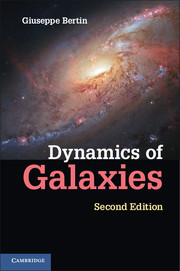Book contents
- Frontmatter
- Contents
- Preface to the Second Edition
- Preface to the First Edition, 2000
- Acknowledgments
- PART I Basic Phenomenology
- 1 Scales
- 2 Observational Windows
- 3 Classifications
- 4 Photometry, Kinematics, and Dark Matter
- 5 Basic Questions, Semiempirical Approach, and the Dynamical Window
- PART II Physical Models
- PART III Spiral Galaxies
- PART IV Elliptical Galaxies
- PART V In Perspective
- Bibliography
- Index of objects
- Index
2 - Observational Windows
from PART I - Basic Phenomenology
Published online by Cambridge University Press: 05 June 2014
- Frontmatter
- Contents
- Preface to the Second Edition
- Preface to the First Edition, 2000
- Acknowledgments
- PART I Basic Phenomenology
- 1 Scales
- 2 Observational Windows
- 3 Classifications
- 4 Photometry, Kinematics, and Dark Matter
- 5 Basic Questions, Semiempirical Approach, and the Dynamical Window
- PART II Physical Models
- PART III Spiral Galaxies
- PART IV Elliptical Galaxies
- PART V In Perspective
- Bibliography
- Index of objects
- Index
Summary
When we make observations, we rely on a number of spectral windows for which we have instruments to study the radiation that reaches the Earth. Obviously, astronomy is centered around optical radiation. After a long period of work with photographic techniques, most of the current optical studies are based on charge-coupled-device (CCD) detectors, which are solid-state devices based on two-dimensional arrays of detection elements with a wide range of capabilities. The visible light extends from the ultraviolet (UV) region (UV radiation is associated with wavelengths in the range 100 to 4,000 Å) to the near-infrared (near-IR) region (IR radiation has wavelengths between 7,500 Å and the millimeter range). Observations from the ground are limited by the way the light is transmitted by the atmosphere. For example, much of the near-IR radiation is absorbed by the atmosphere, and observations beyond 1 μm are best performed at high altitude (where significant transmission occurs in correspondence with the standard IR filters J, H, and K) or directly from space.
New observational windows have been opened, especially in the second part of past century, and these have dramatically changed our view of the Universe (Fig. 2.1). A major step forward has been identification of the 21-cm line (at a frequency of 1,420 MHz; a hyperfine transition in atomic hydrogen associated with the spin-flip in the electron-proton pair), which has given an enormous boost to radioastronomy. Studies of the kinematics of atomic hydrogen, especially those of the 1970s and the early 1980s, have provided the decisive evidence for the existence of dark matter.
- Type
- Chapter
- Information
- Dynamics of Galaxies , pp. 9 - 18Publisher: Cambridge University PressPrint publication year: 2014



